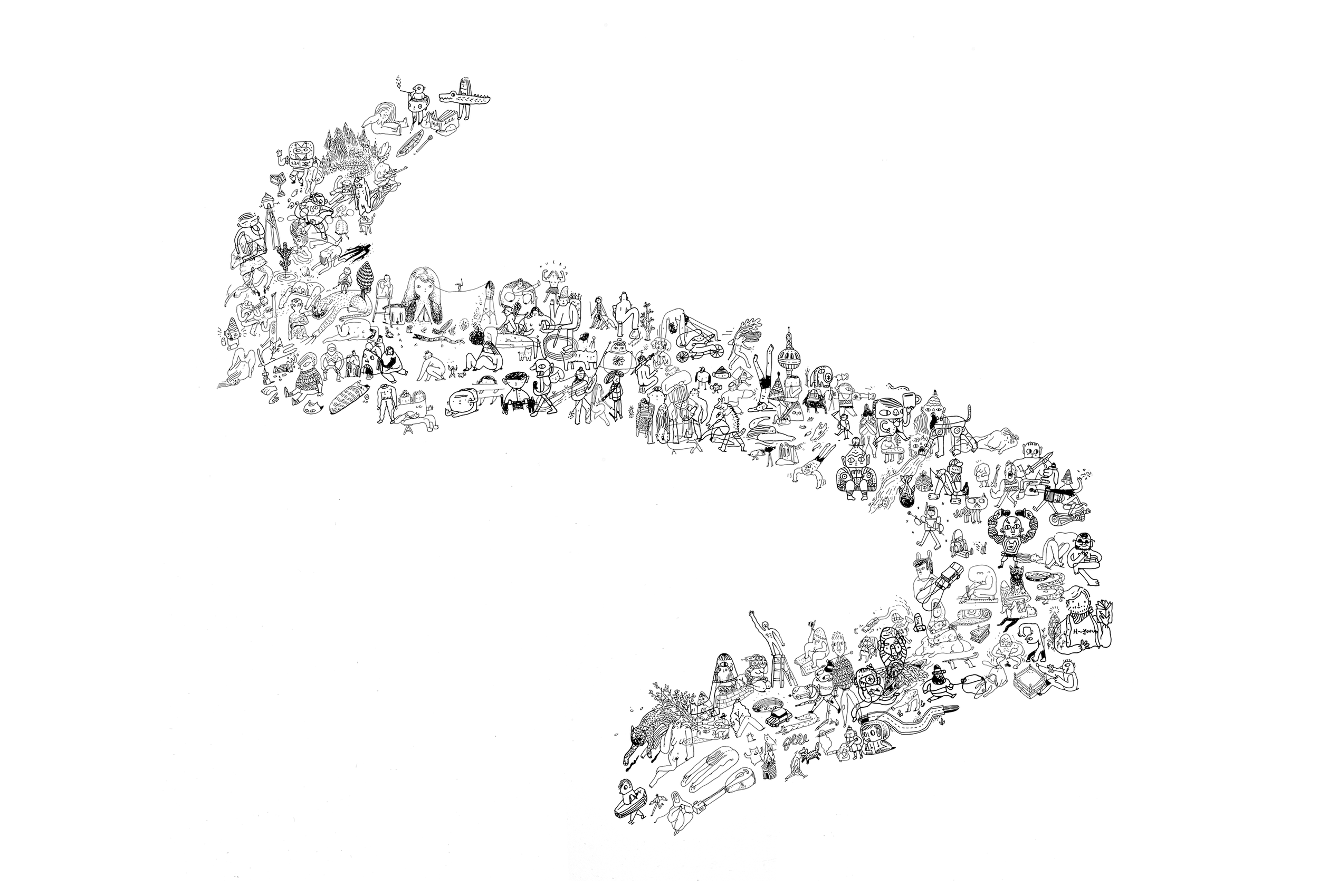Drawing as a form of thought.
(an interview) with Fran Cunha
Text by Fermin Solana for New Braves, Translated by Ellie Robins
español
*
l
o
v
e
Fran Cunha is a Uruguayan designer we’ve been following closely for a long time. We’re fans of everything he does, from his solo work to his projects for Mundial, the design studio he’s been running with his friends since 2012. His creative universe is very tender, cute but also profound. You might sometimes find yourself wishing you lived in it.
Fran’s a real pro whose work has been shown around the world, from New York to Bogotá. In 2015 he was awarded Uruguay’s National Prize for Children’s Illustration.
It was our pleasure to welcome him as one of the first artists to collaborate with New Braves. We originally asked him for some drawings to use on our packaging, but we were so taken with the characters he created that they became a centerpiece of our first clothing collection.
In this brief conversation, we asked Fran how he discovered his passion for illustration, especially children’s illustration—but the first thing he told us was that he doesn’t distinguish between “drawings for adults” and “drawings for kids.”
NB
You’re a graphic designer by trade, so when did you start exploring illustration?
FC
I’ve been drawing for as long as I can remember, so illustration came very naturally to me. I would illustrate album covers and posters for my friends’ bands as well as for commercial projects. It was a creative resource that was already part of my practice. When my two friends and I founded Mundial, our creative studio, we described ourselves as a "studio for illustrated design" from the start. We decided that was the way we wanted to delve deeper into our practice and carve out our niche. Nowadays, we have a broader scope, and illustration is just one of the tools we use—we’re as likely to illustrate something as to find a 100% typographical solution. Drawing is rooted deep in me; it’s a daily practice: I carry a notebook everywhere and am constantly doodling and writing down ideas. I use drawing as a way to think and process things.
FRAN
I use drawing as a way to think and process things.
NB
Where do you find inspiration?
FC
I always draw my inspiration from my closest relationships—my first illustrated book was about my cat Rumba. Now that I have a daughter, Selva, she has become a constant source of inspiration. I’m working on a new book with her as the protagonist.
When it comes to artistic inspiration, I’m drawn to artists with a relaxed style, who make use of their own limitations—the scribblings of Emilio Figari or David Shrigley, for instance. But my very favorites are Mari Kanstad Johnsen and Beatriz Alemagna. They’re the artists I envy most. Each book they create is like a mini art gallery on your bookshelf.
NB
How much of your childlike spirit do you still have at nearly 40 years of age?
FC
Personally, I’d say quite a lot, since drawing is an essential aspect of my daily work, and I still write songs even though I don’t know how to play the guitar. And now Selva has given me an excuse to take out the Legos again and spend hours playing.
NB
What does Selva say about your work?
FS
We’ve been drawing together more and more often, and I always ask her for her opinion on my work while also trying to follow her lead. For me, it’s just like drawing with any other colleague, except Selva will stop drawing to do a handstand every now and then.
NB
Tell us about the illustrations you did for New Braves.
FC





